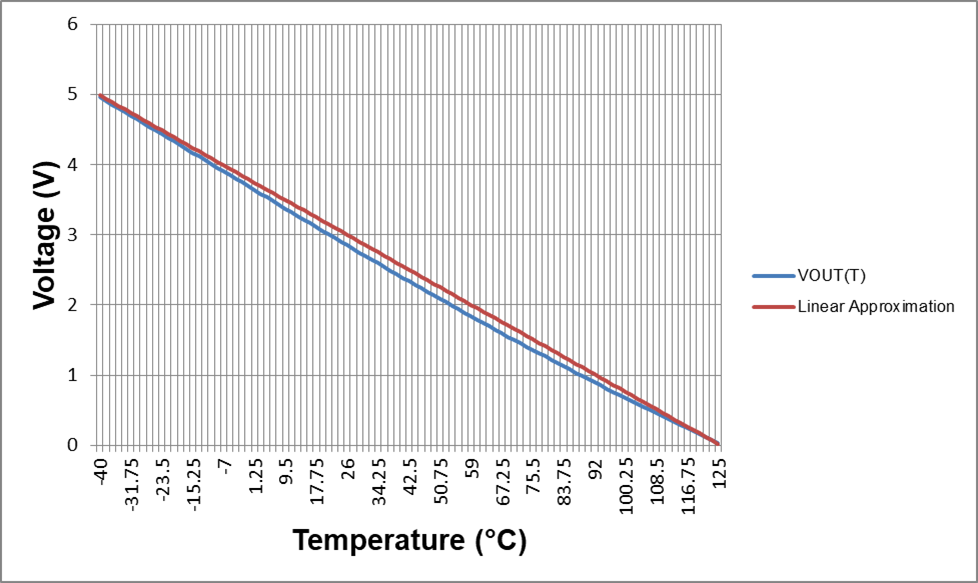SBOA505 December 2020 OPA2991-Q1 , TLV197-Q1 , TLV2197-Q1 , TLV4197-Q1 , TMP61 , TMP61-Q1 , TMP63 , TMP63-Q1 , TMP64-Q1
Sensor Circuit Accuracy Using a Linear Approximation
The TMP61 linear thermistor was selected due to its resistance response over temperature. To solve for the resistor network the TMP61 resistance response over temperature was assumed to be completely linear. The error pertains to the slight non-linear behavior of the voltage divider output as a function of temperature, VNTC(T).
The error is exhibited as a difference between the actual temperature and the calculated temperature from the ADC. The output temperature of the sensor circuit is most accurate at the temperature extremes (end points). This is because the endpoint values of VNTC(T) were utilized in the linear approximation. The highest loss of accuracy is at the local minimum or vertex of VNTC(T). A comparison of the linear approximation and the simulated response is shown in the following figure.
In the following image, the comparison of Vout(T) to the linear approximation is used to calculate the resistor values. Vout(T) represents the actual where the linear approximation represents the calculated temperature.

The calculated worst-case output error is approximately 6.6°C. This error occurs at the vertex of VOUT(T) where the voltage delta between VOUT(T) and the linear approximation is at its largest. The temperature reading from the ADC is approximately 54.05°C while the actual temperature is 47.45°C. The accuracy greatly improves near the endpoints and where the VNTC(T) is most linear. To reduce the temperature error, an offset can be applied to the equation shifting the output voltage response lower. Applying an offset to the curve will reduce the error at the vertex of the curve but sacrifice accuracy towards the endpoints.